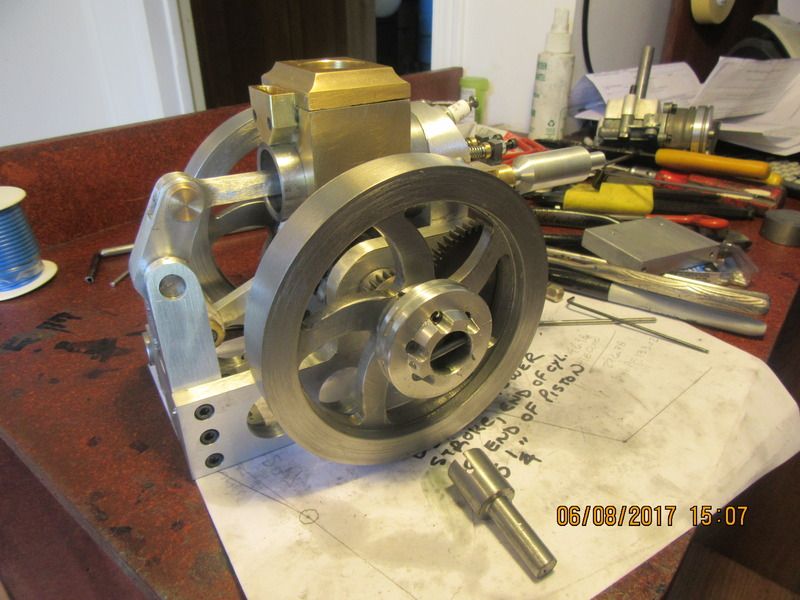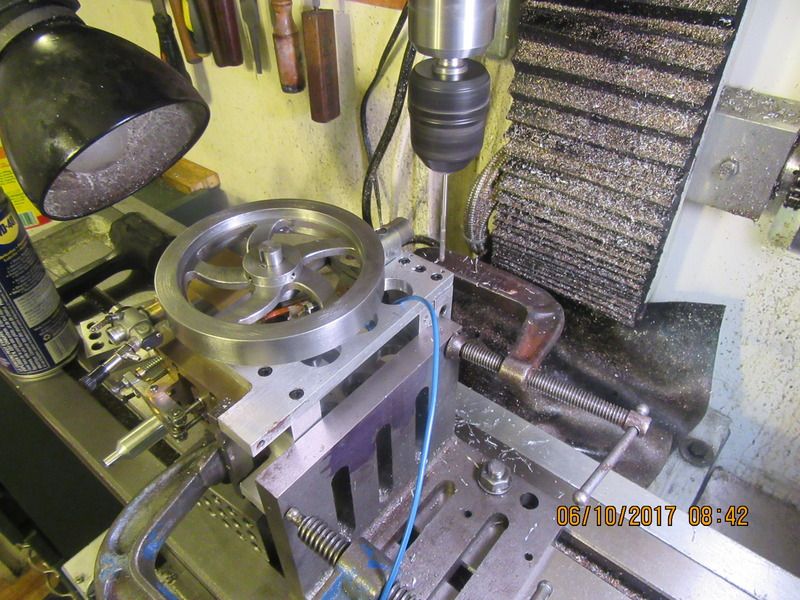And now we have a combination drive-pulley and starter hub. The starter spud which I use in my variable speed drill is also new, laying in the foreground. That should be the end of the machining on this engine. The new points and condenser have been installed. All I need now is lots and lots and lots of luck. If I have lived a good clean life, etcetera, etcetera, the next post you see may be a video of the engine running.---Brian







